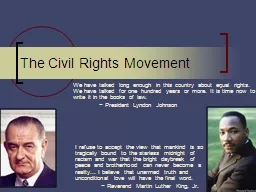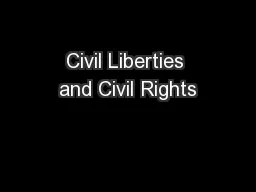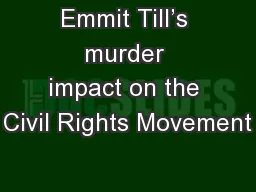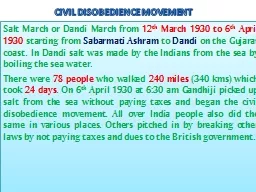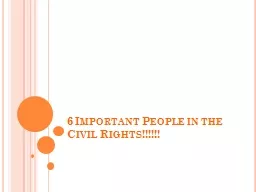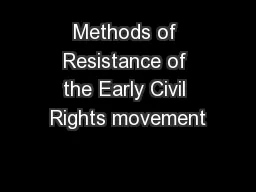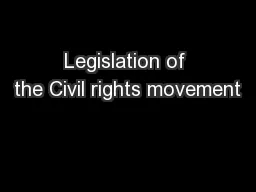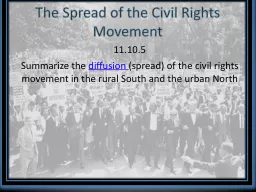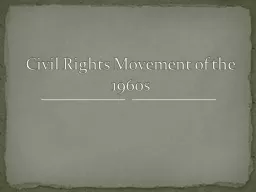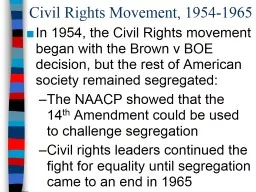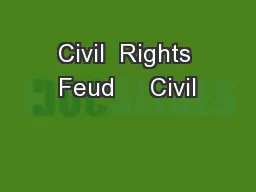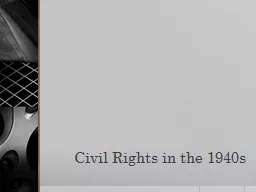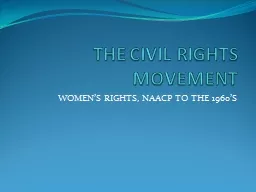PPT-1 The Civil Rights Movement
Author : ellena-manuel | Published Date : 2019-12-03
1 The Civil Rights Movement We have talked long enough in this country about equal rights We have talked for one hundred years or more It is time now to write it
Presentation Embed Code
Download Presentation
Download Presentation The PPT/PDF document "1 The Civil Rights Movement" is the property of its rightful owner. Permission is granted to download and print the materials on this website for personal, non-commercial use only, and to display it on your personal computer provided you do not modify the materials and that you retain all copyright notices contained in the materials. By downloading content from our website, you accept the terms of this agreement.
1 The Civil Rights Movement: Transcript
Download Rules Of Document
"1 The Civil Rights Movement"The content belongs to its owner. You may download and print it for personal use, without modification, and keep all copyright notices. By downloading, you agree to these terms.
Related Documents

